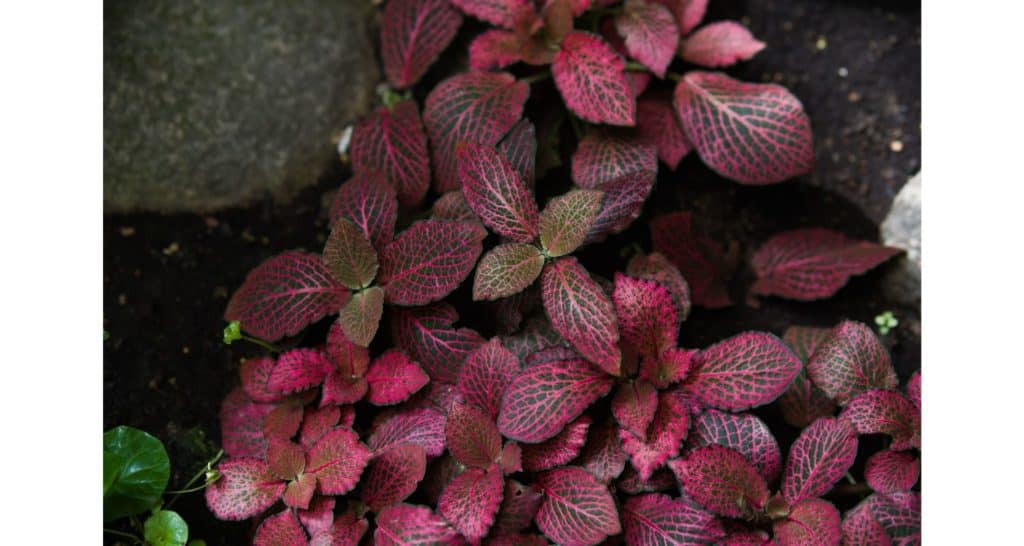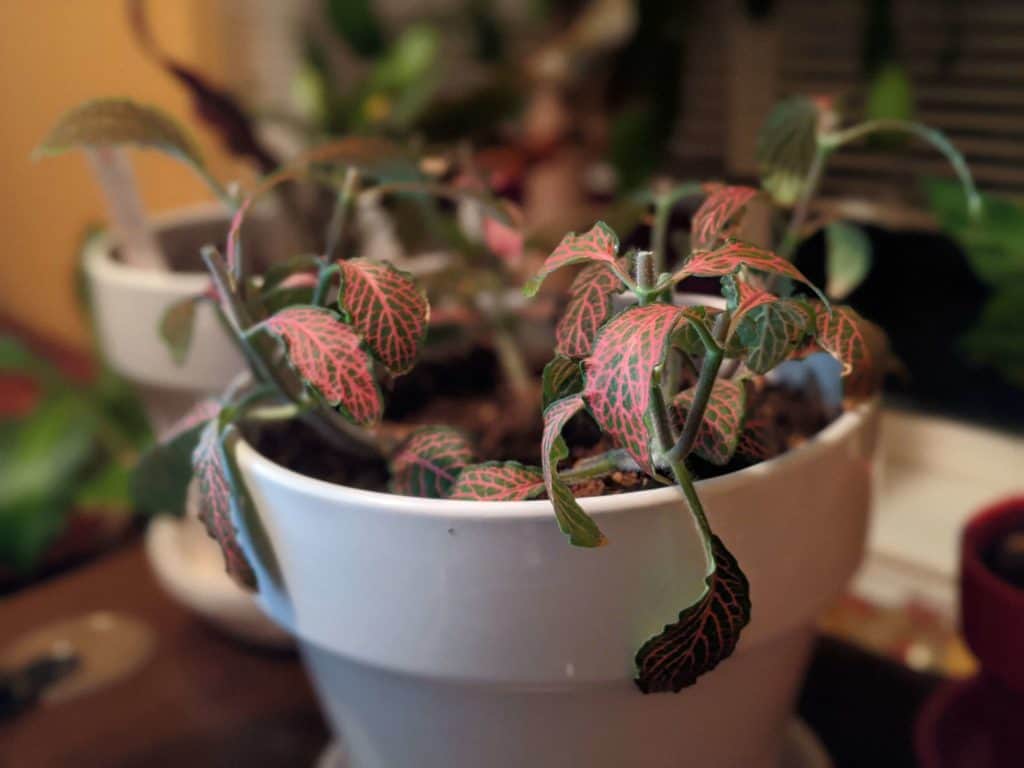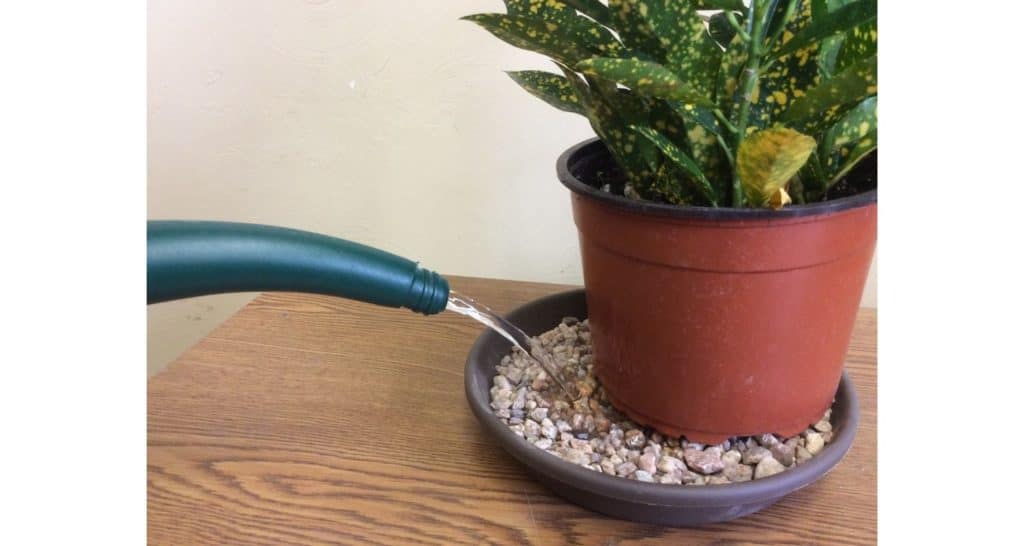Fittonias, also known as Nerve Plants, are beautiful house plants with some of the most colorful leaves of any indoor plant. However, this beauty comes with a price since these plants can sometimes be tricky to care for.
You may notice that your fittonia will start showing signs of stress such as the leaves curling.
So why are your fittonia leaves showing signs of stress?
Fittonias are naturally found in jungles so they prefer warm, humid environments with lots of indirect sunlight. Common reasons for curling leaves on a fittonia plant are lack of water, low humidity, drafts or air vents, and direct sunlight. These common issues can be resolved by watering the plant more, using a pebble tray to increase humidity, and placing the plant in an area with bright indirect sunlight.
Thankfully this is a hardy plant that can bounce back when properly cared for.
Let’s cover where Fittonias are naturally found so we can better understand their ideal environment and how to replicate their favorite conditions.
Where Fittonia Naturally Live
Native to rain forests, nerve plants (understandably) love very warm, humid environments with lots of indirect sunlight. This makes sense since these plants naturally grow underneath the tree canopy in a steamy tropical forest.

So we want to recreate their ideal environment. These plants do best when they are indoors in temperature controlled spaces that stay between 65°F and 85°F with lots of humidity.
Anytime these plants are subjected to wild temperature swings or moisture issues they react negatively.
Gardeners sometimes refer to fittonias as being dramatic plants since they can show signs of stress with slight changes in their environment.
Knowing the ideal environment for fittonias is important since we can figure out why the plant is showing certain signs of stress.
Curling Leaves on Fittonia
It is very common to see Fittonias with curling leaves since these are popular house plants. Below is an example of curling leaves on a Fittonia.

Although curling leaves is not a major problem, the plant does look less beautiful and healthy than when the plant’s leaves are in full bloom.
So what causes fittonia leaves to curl?
Causes Of Curling Fittonia Leaves
We know fittonias prefer warm, high humidity, and bright indirect sunlight environments similar to a rainforest. So one of these three things is likely not perfect enough for this picky plant.
The most common cause of curling leaves on a fittonia plant is due to low humidity. Most homes are lower in humidity than what fittonia plants prefer so the leaves tend to “dry out” and curl.
Fittonia leaves will also curl if they are placed in too much direct sunlight. The leaves may also look burnt if they receive too much direct sunlight.
A less common reason why the fittonia’s leaves are curling is due to pests. Pests such as aphids and spider mites will suck the moisture out of the plant which will cause the leaves to droop and curl.
Read this article if you have pests as you can safely and organically kill most pests with a homemade insecticidal soap spray.
Solutions For Curling Fittonia Leaves
Some simple solutions for curling fittonia leaves are to increase the humidity around the plant and reduce the amount of direct sunlight the plant receives.
Reducing the direct sunlight the plant receives is very simple. Just move the plant to another spot where it receives bright indirect sunlight and is not hit directly by the sun.
Increasing the humidity for the plant requires a little more work but there are some simple and effective solutions.
Increasing The Humidity For Fittonias
First make sure that the fittonia is not placed in a drafty area or in the path of a heater vent. These plants respond negatively to low humidity environments and a drafty area will dry the leaves out.
You can mist the plant’s leaves and place a glass dome / plastic bag over the plant. This will create a high humidity environment for your nerve plant which will uncurl the leaves.
A long term solution is to create a plant humidifier with a pebble tray. Pebble trays are simple and cheap to make. In fact, you might have all the materials you need in your garden already.
Let’s cover how to make a pebble tray.
Simple DIY Humidifier: Pebble Tray
Pebble trays are a simple and effective solution to providing more humidity to plants. A pebble tray is exactly what it sounds like – a tray full of pebbles.
Most house plants, including fittonias, are tropical plants that can grow better in a humid environment.

In order to make a pebble tray:
- Select a shallow tray that is larger than the base of the plant’s pot
- Fill the tray with a single layer of pebbles
- Add water so it rises to about halfway up the rocks
That’s it! You have now created a simple but effective pebble tray for increasing humidity.
Next just place your plant on top of the pebbles and add water to your tray if it ever dries out.
Conclusion
Fittonias are beautiful houseplants that can be a bit dramatic when it comes to low humidity and too much sunlight. Similar to Goldilocks, the conditions must be just right otherwise the plant will show signs of stress.
Curling leaves are a common sign of stress on the Fittonia plant. Thankfully increasing the humidity and reducing the amount of direct sunlight usually fixes this issue.
Just place your fittonia planter on top of a pebble tray in bright indirect sunlight and watch your Fittonia show it’s full beauty once again.

